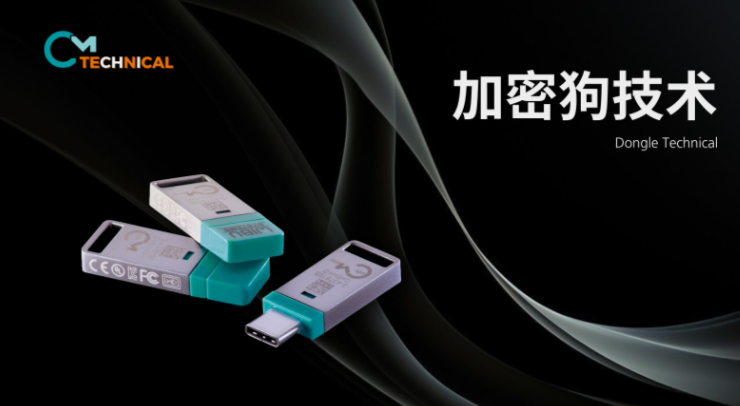codemeter控制中心
软件: codemeter
CodeMeter Control Center: Centralized Management Tool for Software Licensing
CodeMeter Control Center is a comprehensive client-side management utility designed to streamline the administration of CodeMeter-enabled licensing solutions. It serves as the primary interface for users to monitor, configure, and maintain hardware (CmDongle), software (CmActLicense), and cloud-based (CmCloud) encryption locks, ensuring secure and efficient software authorization across various environments.
Key Interface & Access Features
The tool integrates seamlessly with the Windows taskbar, displaying a green circular icon for easy access. Users can open the control center by double-clicking the icon or right-clicking and selecting "Show." For remote or web-based management, entering http://localhost:22352 or http://localhost:22350 in a browser provides access to the web interface (note: port numbers may vary by configuration).
Core Management Functions for Hardware/Software Locks
The control center organizes connected encryption devices into three categories (hardware, software, cloud), with detailed information displayed for each lock:
Hardware Locks: View/edit the lock name (to associate with specific users), check serial number/version/status, trigger LED blinking (via sequence number), update firmware (to enhance security), and modify access passwords (for asset management).

Software Locks: View name/serial/version (non-editable by end-users), update licenses, and remove permits (grayed out by default to prevent unauthorized changes).
Cloud Locks: Manage network-based licenses with similar functionalities to hardware locks, optimized for cloud deployments.
Advanced Operational Tools
Beyond basic management, the control center offers powerful utilities for troubleshooting and optimization:
File Menu: Import license upgrade files, launch logs, or access the web management interface directly.
Process Menu: Defragment license memory (to remove invalid entries), sync the lock’s internal clock with standard time, repair hardware configurations (for SD/microSD/CF cards), and start/stop/restart the CodeMeter service (to resolve runtime faults).
View Menu: Create or review system logs to track license usage, errors, or changes.
Help Menu: Access documentation, check version information, or get support resources.
Troubleshooting Common Issues
A frequent challenge is accessing the web management interface, often resolved by:
Switching browsers (e.g., Chrome, Firefox) to avoid compatibility issues.
Modifying the registry to change the communication mode: Navigate to HKEY_LOCAL_MACHINE\SOFTWARE\WIBU-SYSTEMS\CodeMeter\Server\CurrentVersion, set ApiCommunicationMode to 2 (shared memory), and restart the CodeMeter service.
Updating the CodeMeter Runtime to the latest version to ensure optimal performance and compatibility.
The control center’s intuitive design and robust feature set make it an indispensable tool for both developers (to protect intellectual property) and end-users (to manage licenses efficiently), supporting seamless integration across Windows, Linux, macOS, and embedded platforms.
CodeMeter Control Center is a comprehensive client-side management utility designed to streamline the administration of CodeMeter-enabled licensing solutions. It serves as the primary interface for users to monitor, configure, and maintain hardware (CmDongle), software (CmActLicense), and cloud-based (CmCloud) encryption locks, ensuring secure and efficient software authorization across various environments.
Key Interface & Access Features
The tool integrates seamlessly with the Windows taskbar, displaying a green circular icon for easy access. Users can open the control center by double-clicking the icon or right-clicking and selecting "Show." For remote or web-based management, entering http://localhost:22352 or http://localhost:22350 in a browser provides access to the web interface (note: port numbers may vary by configuration).
Core Management Functions for Hardware/Software Locks
The control center organizes connected encryption devices into three categories (hardware, software, cloud), with detailed information displayed for each lock:
Hardware Locks: View/edit the lock name (to associate with specific users), check serial number/version/status, trigger LED blinking (via sequence number), update firmware (to enhance security), and modify access passwords (for asset management).

Software Locks: View name/serial/version (non-editable by end-users), update licenses, and remove permits (grayed out by default to prevent unauthorized changes).
Cloud Locks: Manage network-based licenses with similar functionalities to hardware locks, optimized for cloud deployments.
Advanced Operational Tools
Beyond basic management, the control center offers powerful utilities for troubleshooting and optimization:
File Menu: Import license upgrade files, launch logs, or access the web management interface directly.
Process Menu: Defragment license memory (to remove invalid entries), sync the lock’s internal clock with standard time, repair hardware configurations (for SD/microSD/CF cards), and start/stop/restart the CodeMeter service (to resolve runtime faults).
View Menu: Create or review system logs to track license usage, errors, or changes.
Help Menu: Access documentation, check version information, or get support resources.
Troubleshooting Common Issues
A frequent challenge is accessing the web management interface, often resolved by:
Switching browsers (e.g., Chrome, Firefox) to avoid compatibility issues.
Modifying the registry to change the communication mode: Navigate to HKEY_LOCAL_MACHINE\SOFTWARE\WIBU-SYSTEMS\CodeMeter\Server\CurrentVersion, set ApiCommunicationMode to 2 (shared memory), and restart the CodeMeter service.
Updating the CodeMeter Runtime to the latest version to ensure optimal performance and compatibility.
The control center’s intuitive design and robust feature set make it an indispensable tool for both developers (to protect intellectual property) and end-users (to manage licenses efficiently), supporting seamless integration across Windows, Linux, macOS, and embedded platforms.











